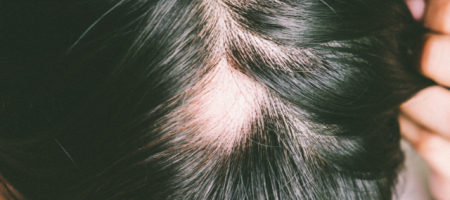Alopecia

Alopecia is the medical term for ‘hair loss’ which can be broadly categorised into scarring and non scarring alopecia and also into generalised (affecting much of the scalp) and focal (affecting a specific area of the scalp).
The most common cause of hair loss is androgenetic alopecia that occurs in both men and women.
Alopecia areata is a common (approximately 3% of the population) autoimmune cause of hair loss. This presents in a wide spectrum of ways from single patches of alopecia that spontaneously regrowth to loss of all the scalp hair (alopecia totalis) and loss of all the body hair (alopecia universalis).
A rarer type of hair loss is the scarring alopecia category. These are more challenging to treat but management plans are available for these disorders as well.
Symptoms
Alopecias lead to variable cosmetic effects on the appearance of the individual due to the cause and may, at times, be associated with symptoms such as itch, irritation or discomfort.
Causes
The mechanism of loss of the hair growth / follicle varies according to the cause such as:
- decreased growth of the hair
- increased shedding of the hair
- conversion of thick terminal hairs to thin vellus hairs
- congenital or acquired hair shaft abnormalities
- an inflammatory skin disease that damages or destroys the hair bulb.
Some causes of hair loss are congenital i.e., present from birth and rarely, genetic disorders can lead to hair loss and abnormalities including at times fragility of the hair shaft itself (which is the substance of the hair fibre).
Treatments
Treatments focus on stimulating hair regrowth and include:
- Topical therapies
- Corticosteroid injections
- Systemic medication where appropriate
- Hair transplantation
- Cosmetic camouflage may also be used until treatment takes effect.
Resources
For further information, you can visit the following resources:

